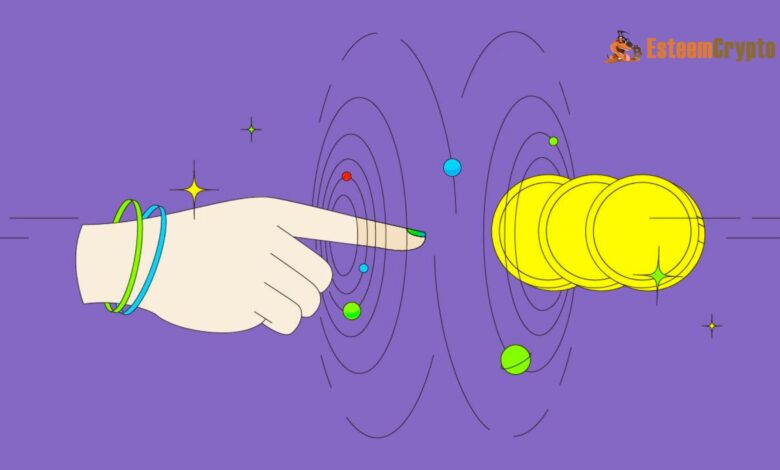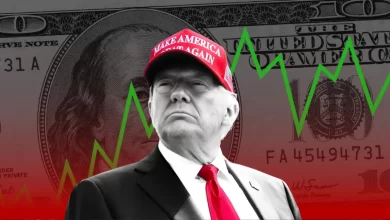Market Depth in Crypto: An Ultimate Guide By Esteemcrypto

Market Depth in Crypto. Market depth measures how well a cryptocurrency exchange can handle large orders without seeing a noticeable price change. It is a measure of liquidity that displays the total number of buy-and-sell orders for a specific coin at various price points. How, then, is the depth of the market shown? A depth chart is a typical tool to show this information. It displays buy orders (bids), sell orders (asks), and price levels.
Consider Binance’s (an exchange) Bitcoin (BTC) order book. You may see the amounts and prices of all the pending bids and asks in the order book. A more excellent bid side relative to the ask side of the order book indicates a deeper market on the buy side, which in turn suggests vigorous buying activity. In contrast, a thick ask side indicates intense selling pressure.
For more stability and less volatility, look for a market that can handle big trades without affecting prices too much. As an illustration, in an intense market, an investor looking to sell 100 BTC may only see a slight price drop due to varying prices.
In contrast, a shallow-depth market may see a substantial drop in price for the same transaction due to a lack of buy orders to balance out sales. A comprehensive understanding of market depth is crucial for traders to accurately estimate market liquidity, predict price movements, and successfully execute transactions. Traders may access and analyze this data using tools such as market depth indicators and charts, enabling them to make informed decisions.
Factors Affecting Market Depth
How resilient a market is to large trades, which depends on many factors, affects its overall trading efficiency and price stability. Here are the elements:
Liquidity
More buyers and sellers means deeper market structures and more liquidity in the market. But, huge orders can significantly impact pricing in illiquid markets.
Bid-ask spread
The small price differential between the highest bid and the lowest ask indicates vigorous trading activity and increased market stability. Narrow bid-ask spreads often characterize a deep market’s
popularity and volume.
From one exchange to the next, the market depth varies substantially. The depth is usually better on more prominent exchanges like Kraken, Binance, and Coinbase due to the higher trading volumes and active user bases. This depth may be lacking on smaller exchanges, making prices more susceptible to huge orders.
The distribution and size of orders
Many smaller orders indicate a deep market as opposed to a shallow market. More consistent trading and stable prices are achieved with small orders.
Market maker activity
Market makers provide liquidity for cryptocurrency by often quoting buy and sell prices. Because of their presence, the market is deeper because orders are always available on both sides.
Economic indicators
Potentially impacting market depth are news and macroeconomic variables. Good economic news can boost market depth and confidence, while negative news can make participants more wary and reduce them.
Regulatory environment
By fostering investor engagement and confidence, regulations that uphold openness and fair trade practices broaden the market.
Trading pairs
The level of detail included in specific trading pairings can also vary. The markets for less common trading pairings, such as BTC/USDT or ETH/USDT, tend to be shallower than those for more popular pairings because of the lower volume of trades and overall market depth.
Also Read: P2P Trading—How Does It Work in Peer-to-Peer Crypto Exchanges?
Crypto Traders Analyze Market Depth for Technical Analysis
When doing technical analysis, market depth is an invaluable instrument. Cryptocurrency traders rely on it to gauge market liquidity, identify potential support and resistance levels, and make educated trading decisions. With market depth, traders may see all open buy and sell orders at various price points in the order book, which helps them anticipate market shifts and alter their tactics.
Take a trader interested in Bitcoin’s market depth on Kraken as an example. If the trader sees a concentration of purchase orders at one price point, it could be a sign of solid support. This indicates a good chance that the price will find buyers at this level and maybe recover if it drops below it. In contrast, if there are a lot of sell orders at a higher price point, it could mean that there is resistance, where selling pressure is trying to keep the price from going much higher.
Traders often use market depth to evaluate the potential impact of big deals. A large buy or sell order won’t increase the price if the market is plunging, stable, and liquid. In contrast, a shallow market may see significant price swings due to the same transaction, suggesting high volatility and potential dangers.
The depth chart is a common technique for visually representing the total number of buy and sell orders at various price points. Traders might observe impending price movement on these charts, known as “walls” of orders. These are significant clusters of purchase or sell orders. As an illustration, a trader would position their sell orders just below a substantial sell wall.
Crypto Trading Methods Based on Market Depth
Strategies including algorithmic trading, swing trading, position trading, arbitrage, and market depth play a role in cryptocurrency trading.
Swing trading
variation in the market. The need for market depth for traders to join and exit positions at beneficial prices is not as high as for scalping, but it is still crucial. In deep markets, swing traders can efficiently execute their orders without slippage. Due to slippage from a lack of liquidity, the execution price deviates from the target price.
Arbitrage
When an asset’s price fluctuates between different marketplaces or exchanges, arbitrageurs take advantage of the discrepancy. Arbitrage strategies rely on market depth since they determine how easy and expensive it is to execute deals across several venues. Deep markets facilitate the exploitation of arbitrage opportunities by reducing the risk of slippage before the price difference is set.
Position trading
Position traders focus more on long-term trends than short-term volatility and hold assets for extended periods, from months to years. Market depth affects their ability to enter or leave extensive holdings without significantly changing the price, even if it is not as crucial for their immediate transactions. Position traders can be confident they can finally sell their holdings without experiencing significant market effects when the market is profound.
Scalping
A high-frequency trading technique called scalping entails taking advantage of minute price fluctuations to generate multiple small profits. Deep markets are perfect for scalping because they offer enough liquidity to allow traders to join and leave positions quickly without significantly moving prices. Because scalpers depend on quick trade execution and tight bid-ask spreads, market depth is essential to their success.
Algorithmic trading
Algorithmic trading uses computer algorithms to execute transactions according to pre-defined criteria. One common way these algorithms improve trade execution is by considering market depth. Algorithms can find the best times to buy or sell by looking at the order book, which helps to reduce costs and market impact. For high-frequency trading algorithms to function successfully, deep markets are crucial.
Risks Associated with Using Market Depth for Crypto Trading
Several dangers are associated with using market depth for cryptocurrency trading, such as the possibility of market manipulation, spoofing, wash trading, and the lack of transparency caused by off-exchange trading. Traders can also be misled and lose money due to the fast movements of high-frequency trading algorithms.
Manipulation of the market is a significant possibility. Massive traders, sometimes known as “whales,” can artificially inflate the perception of market sentiment in cryptocurrency markets, particularly ones with poor liquidity. For example, a “whale” could artificially inflate prices by placing a massive buy order to trick other traders into thinking there’s a lot of demand, only to reverse the order later and sell at a profit.
Another thing to think about is the chance of spoofing and wash trading. Spoofing is a trading tactic whereby large orders are placed with no intention of being filled to deceive other traders about the market’s supply and demand. A trader engages in wash trading when they buy and sell the same asset multiple times to distort the actual transaction volume. These techniques can distort market depth data to the untrained eye, leading to irrational trading decisions.
In addition, market depth does not consider off-exchange trading, such as over-the-counter transactions, which can significantly influence the market but are not recorded in the order book. Misunderstandings about the actual state of the market could result from this haziness.
Another way high-frequency traders outperform ordinary trading is by using market depth data to execute trades at lightning speed. Individual traders may lose money if the market turns against them because computer algorithms respond quickly to market fluctuations. Due to the hazards above, traders should proceed cautiously while utilizing market depth for crypto trading.




